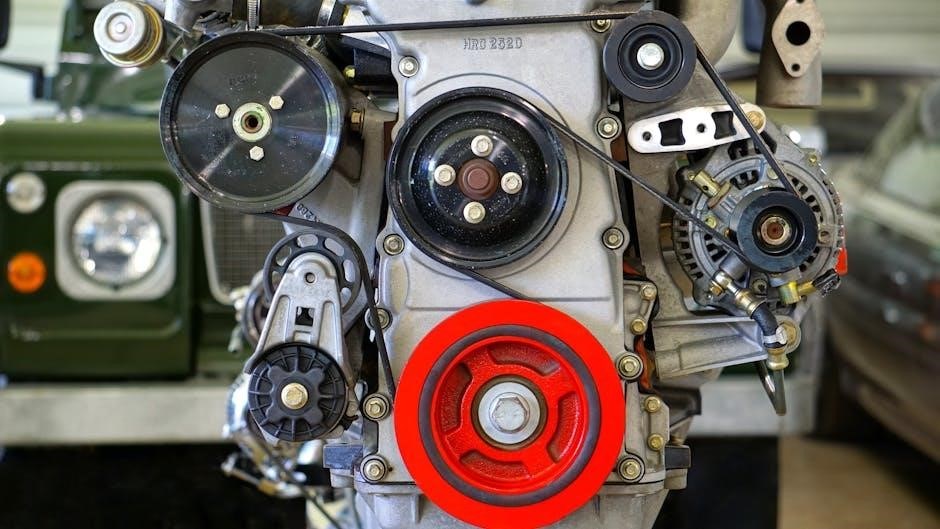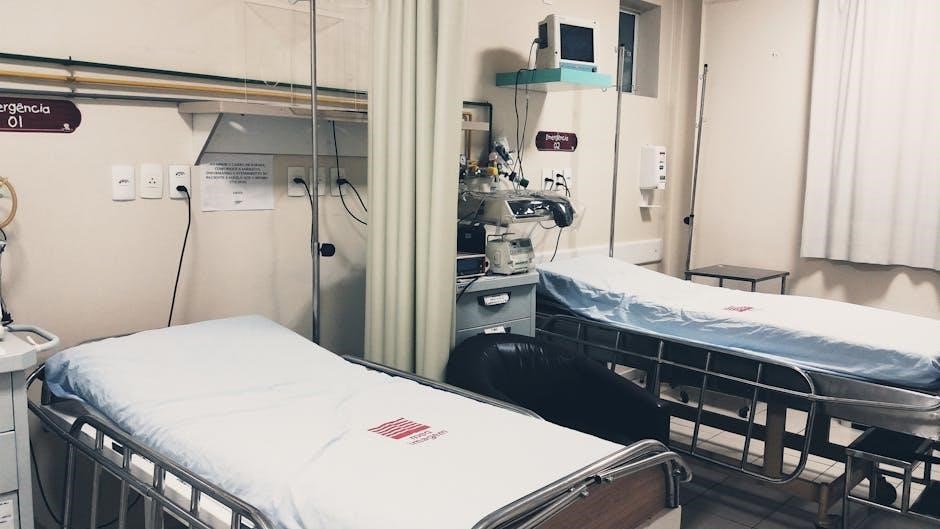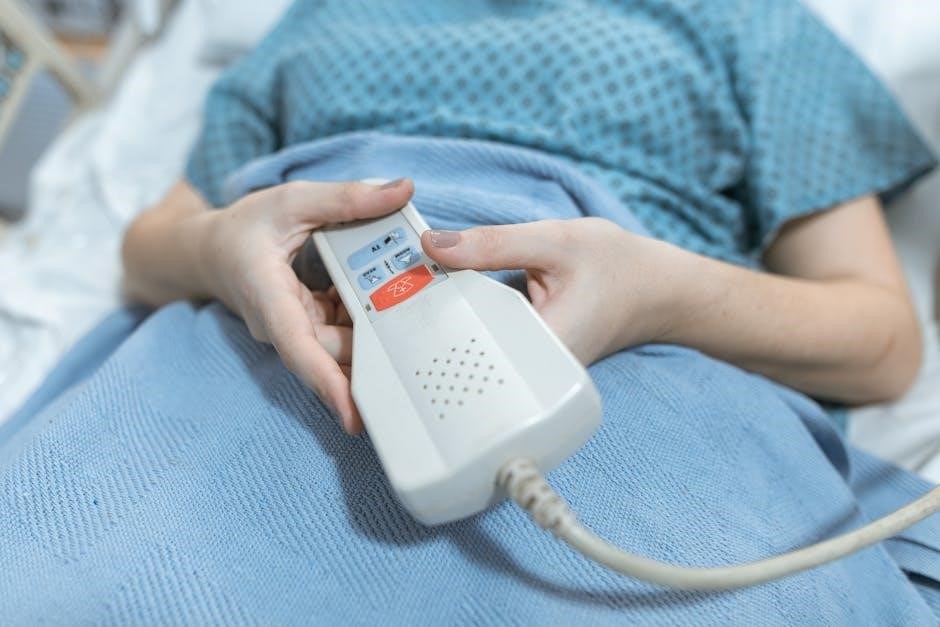
Article Plan: Drive Hospital Bed Assembly Instructions (as of 11/22/2025 11:43:05)
This comprehensive guide details the assembly of Drive Medical hospital beds, referencing models like the 15030BV and P3200 Versacare, ensuring safe and correct setup.
Drive Medical is a leading provider of medical equipment, including a broad line of hospital beds like the Delta Ultra Light. Proper assembly is crucial for patient safety and comfort.
Overview of Drive Medical as a Provider
Drive Medical has established itself as a prominent global manufacturer and distributor of durable medical equipment, catering to a diverse range of healthcare needs. They offer a comprehensive portfolio encompassing mobility aids, respiratory supplies, and, significantly, hospital beds designed for both acute care and home healthcare settings.

The company’s commitment extends beyond simply providing products; they focus on enhancing the quality of life for individuals with medical conditions. Drive Medical’s beds, including popular models like the Versacare, are known for their reliability and features designed to promote patient comfort and caregiver efficiency.

Furthermore, Drive Medical actively supports healthcare professionals and patients alike through educational resources and responsive customer service. Their dedication to innovation and accessibility makes them a trusted partner within the medical community, consistently striving to meet evolving healthcare demands.
Common Drive Medical Bed Models (e.g., 15030BV, P3200 Versacare)
Drive Medical offers a variety of hospital bed models, each designed with specific features to address diverse patient needs. The 15030BV, a semi-electric bed often packaged with half rails and a therapeutic mattress, is popular for home healthcare due to its ease of use and affordability. It frequently requires minimal tool setup for initial configuration.
The Hill Rom P3200 Versacare, frequently found as a refurbished option through vendors like GMG Medical Equipment, represents a more advanced solution. This model often includes features like auto-contour, ensuring patient comfort during positioning changes, and Hi/Lo functionality for caregiver convenience.
Other models cater to bariatric patients or long-term care facilities, demonstrating Drive Medical’s broad product range; Identifying the correct model and serial number is crucial when ordering parts or contacting customer service.
Importance of Correct Assembly
Proper assembly of a Drive Medical hospital bed is paramount for patient safety and optimal functionality. Incorrectly assembled beds can pose significant risks, including instability leading to falls, malfunctioning side rails compromising patient security, and compromised Hi/Lo mechanisms hindering caregiver adjustments.
Ensuring all frame components are securely locked, and that rails are properly attached and functioning according to FDA guidelines, is critical; The half rail design specifically aims for FDA compliance regarding hospital bed system dimensions.
Furthermore, correct assembly guarantees the bed’s features, such as auto-contour, operate as intended, maximizing patient comfort and preventing pressure injuries. A well-assembled bed contributes to a safer and more effective healthcare environment, both in institutional and home settings.

Safety Precautions Before Assembly
Prior to assembly, verify all parts are present, identify the bed’s model and serial number, and gather necessary tools for a secure process.
Required Tools and Equipment
Assembling a Drive Medical hospital bed requires a specific set of tools to ensure a safe and structurally sound build. While some models boast no-tool setups, most benefit from having a standard toolkit readily available. Essential tools include a ratchet set with various socket sizes, an adjustable wrench, and a Phillips head screwdriver. A rubber mallet can be incredibly useful for gently securing components without causing damage.
Depending on the model, you might also need a level to guarantee the bed is perfectly horizontal, preventing potential hazards. Having work gloves is advisable to protect your hands during the assembly process. It’s also beneficial to have a clean, spacious work area, free from obstructions, to facilitate efficient assembly. Finally, keep the bed’s manual close at hand for reference, as it will detail any specific tool requirements for your particular Drive Medical bed model.
Identifying Bed Parts and Components
Before commencing assembly, thoroughly familiarize yourself with all the components of your Drive Medical hospital bed. Key parts include the headboard, footboard, side rails (both half and full options are common), and the bed deck itself. The Hi/Lo mechanism, if present, will consist of a motor and associated lifting column.
Pay close attention to smaller parts like locking mechanisms for the rails, corner posts, and any included accessories such as IV poles. Refer to the parts list in your bed’s manual to confirm you have everything needed. Understanding the function of each part is crucial; for example, half rails are designed for patient safety and FDA compliance. Knowing your bed’s model and serial number, as indicated on the bed frame, is vital when ordering replacement parts or contacting customer service.
Understanding Bed Serial Numbers and Model Numbers
Drive Medical hospital beds utilize both model and serial numbers for identification and support. The model number, such as 15030BV or P3200, designates the specific bed type and features. This number is essential when searching for compatible parts or accessing specific documentation.
The serial number is a unique identifier for your individual bed. It’s crucial when contacting Drive DeVilbiss Healthcare Customer Service or ordering replacement components. Locate the serial number directly on the bed frame – its exact placement may vary by model. Always include both the model and serial number when requesting assistance. Accurate identification ensures you receive the correct parts and support, streamlining any maintenance or repair processes. Properly documenting these numbers is a best practice for long-term bed ownership.

Assembling the Bed Frame
Begin by securely attaching the headboard and footboard to the side rails, then verify frame stability and engage all locking mechanisms for safety.
Attaching the Headboard and Footboard
Carefully unpack the headboard and footboard components, inspecting them for any shipping damage before proceeding. Align the headboard and footboard brackets with the corresponding slots or mounting points on the side rails. Ensure proper orientation – the headboard typically has more features or a higher profile.
Securely fasten the headboard and footboard using the provided bolts and washers, tightening them firmly with the appropriate tools. Avoid over-tightening, which could strip the threads or damage the components. Double-check that all bolts are properly seated and tightened to ensure a stable connection. A wobbly headboard or footboard indicates insufficient tightening.
Refer to the specific model’s diagram for precise bracket locations and bolt specifications. Proper attachment is crucial for overall bed frame integrity and patient safety.

Connecting the Side Rails
With the headboard and footboard secured, carefully position the side rails for connection. Most Drive Medical beds utilize a hook-on or bolt-in system for attaching side rails. Align the side rail connectors with the corresponding receptacles on the headboard and footboard. Ensure a snug fit before fully engaging the locking mechanisms.
Depending on the model, you may need to depress a release lever or rotate a locking cam to secure the side rails. Verify that the locking mechanisms are fully engaged on both sides, providing a stable and secure frame. Gently attempt to wiggle the side rails to confirm their stability.
Properly connected side rails are fundamental to the bed’s structural integrity and prevent accidental collapse. Always double-check the connections before patient use.
Ensuring Frame Stability and Locking Mechanisms
After connecting the side rails, rigorously assess the overall frame stability. Gently apply pressure to each corner and along the length of the side rails to identify any wobble or looseness. All locking mechanisms – those securing the side rails to the headboard and footboard – must be thoroughly checked for complete engagement.
Listen for a distinct ‘click’ or visual confirmation of the lock being fully secured. If a mechanism feels insecure, disengage and re-engage it, ensuring proper alignment. A stable frame is paramount for patient safety, preventing potential falls or injuries.
Regularly inspect these locking points during routine maintenance to maintain bed integrity.

Installing Bed Sections and Mechanisms
This stage involves attaching head, foot sections, and the Hi/Lo mechanism (if present), alongside understanding auto-contour features for optimal patient comfort and positioning.
Attaching the Head and Foot Sections
Securely attaching the head and foot sections is crucial for bed functionality and patient safety. Begin by aligning the head or foot section with the corresponding slots on the bed frame, ensuring proper orientation as indicated in the diagrams.
Typically, these sections slide into place and are then locked using a designated locking mechanism – often a lever or pin – located on the side rails. Verify that these locking mechanisms are fully engaged to prevent accidental detachment or movement during use.
Pay close attention to any specific instructions related to your bed model, as attachment procedures can vary. Ensure the sections are level and stable before proceeding. Proper installation prevents sliding during position changes, a key feature of auto-contour beds, maximizing patient comfort and security. Double-check all connections for tightness and stability before moving to the next assembly step.
Installing the Hi/Lo Mechanism (if applicable)
If your Drive Medical bed includes a Hi/Lo mechanism, careful installation is essential for adjustable height functionality. This typically involves attaching a motor and associated components to the bed frame, often near the foot end. Consult the specific instructions for your model, as procedures vary significantly.
Generally, the motor housing will align with pre-drilled holes and secure with bolts. Ensure all bolts are tightened to the manufacturer’s specifications. In the event of a power failure, many models feature a top-mounted Hi/Lo crank for manual adjustment – verify its accessibility post-installation.
Test the Hi/Lo function thoroughly after installation, confirming smooth and consistent operation. The bed should raise and lower evenly without any unusual noises or resistance. Proper installation ensures safe and reliable height adjustment for both patient and caregiver convenience.
Understanding Auto-Contour Features
Drive Medical’s auto-contour feature, available on select hospital beds, is designed to enhance patient comfort and safety during positioning. This system allows the head and foot sections of the bed to move in a synchronized manner, preventing pressure points and minimizing shear forces.
Unlike standard beds where sections move independently, auto-contour ensures patients remain comfortably positioned and experience no sliding during adjustments. This is particularly beneficial for individuals with fragile skin or limited mobility. The feature operates automatically when the head or foot section is adjusted.
Verify the auto-contour function is active after assembly by testing the head and foot section movements. Proper operation guarantees patients remain securely and comfortably supported, reducing the risk of discomfort or injury during bed adjustments.

Rail Installation and Functionality

Securely attaching half or full rails is crucial, complying with FDA guidance for hospital bed systems and ensuring patient safety during use and movement.
Attaching Half Rails and Full Rails
Proper rail attachment is paramount for patient safety and preventing falls. Begin by identifying the correct rail type – half rails offer assisted mobility, while full rails provide greater security. Carefully align the rail mounting brackets with the designated slots on the bed frame’s side rails.
Ensure a firm and audible ‘click’ confirms secure locking of the rail mechanisms. Regularly inspect these locking mechanisms to guarantee continued functionality. Drive Medical designs rails to comply with FDA hospital bed system dimensional assessments, reducing entrapment risks.
Always test the rails’ stability before patient use, applying moderate pressure to confirm they are firmly in place. Incorrectly installed rails can compromise patient safety, so double-check all connections. Remember to familiarize yourself with the specific rail installation instructions included with your Drive Medical bed model.
Ensuring Rail Locking Mechanisms are Secure
Verifying the security of rail locking mechanisms is a critical safety step. Drive Medical beds utilize various locking systems; familiarize yourself with the specific type for your model. After attaching half or full rails, vigorously test each locking mechanism by applying firm, upward pressure to the rail.
Listen for a distinct ‘click’ or visual confirmation indicating proper engagement. Regularly inspect the mechanisms for wear, damage, or looseness. Any compromised mechanism must be immediately addressed – do not use the bed until repaired or replaced.
Consistent monitoring is essential, as patient movement can sometimes dislodge rails. Prioritize patient safety by routinely checking rail security during each shift or patient transfer. Proper rail function directly contributes to preventing falls and ensuring a secure healthcare environment.
FDA Compliance and Rail Design
Drive Medical’s hospital bed rails are designed with stringent FDA compliance in mind. Specifically, half rails are engineered to meet the requirements outlined in the FDA’s Hospital Bed System Dimensional and Assessment Guidance. This guidance aims to reduce patient entrapment risks, a primary safety concern.
The rail design incorporates features to minimize gaps and potential hazards, ensuring patient safety during movement and positioning. Understanding these design elements is crucial during assembly and ongoing use. Regularly inspect rails for any modifications or damage that could compromise their FDA-approved functionality.
Adherence to these standards is non-negotiable, contributing to a safer patient care environment. Proper installation and maintenance of the rails, as per Drive Medical’s instructions, are vital for continued compliance.

Troubleshooting Common Assembly Issues
Addressing frame instability and missing parts are frequent challenges. Verify all connections and contact Drive DeVilbiss Healthcare Customer Service for replacements promptly.
Addressing Frame Instability
Frame instability during Drive Medical hospital bed assembly often stems from improperly secured connections. Begin by meticulously re-checking all bolts, screws, and locking mechanisms along the headboard, footboard, and side rails. Ensure these are tightened to the manufacturer’s specifications – avoid over-tightening, which can damage components.
If instability persists, verify the floor surface is level. Uneven flooring can significantly impact bed stability. Consider using shims under the bed’s legs to compensate for any discrepancies. Inspect the Hi/Lo mechanism (if equipped) for proper engagement and locking. A malfunctioning mechanism can contribute to wobbling or rocking.
Double-check that all bed sections are correctly aligned and locked into place. Finally, consult the model-specific assembly instructions for your Drive bed (e.g., 15030BV, P3200 Versacare) as they may detail specific reinforcement techniques or troubleshooting steps for frame stability issues.
Dealing with Missing Parts
Encountering missing parts during Drive Medical hospital bed assembly is frustrating, but resolvable. Immediately halt assembly and carefully review the parts list included with your bed – referencing the model number (like 15030BV) is crucial. Cross-reference the physical components you do have against this list to confirm exactly what’s absent.
Contact Drive DeVilbiss Healthcare Customer Service directly, providing your bed’s model and serial number. Having this information expedites the replacement process. Be prepared to describe the missing part(s) accurately. GMG Medical Equipment, specializing in refurbished beds, may also offer guidance.
Avoid substituting parts from other beds or using non-approved replacements, as this could compromise safety and void warranties. Document all communication with Drive Medical, including dates, names, and tracking numbers for replacement parts. Patience is key during this process.